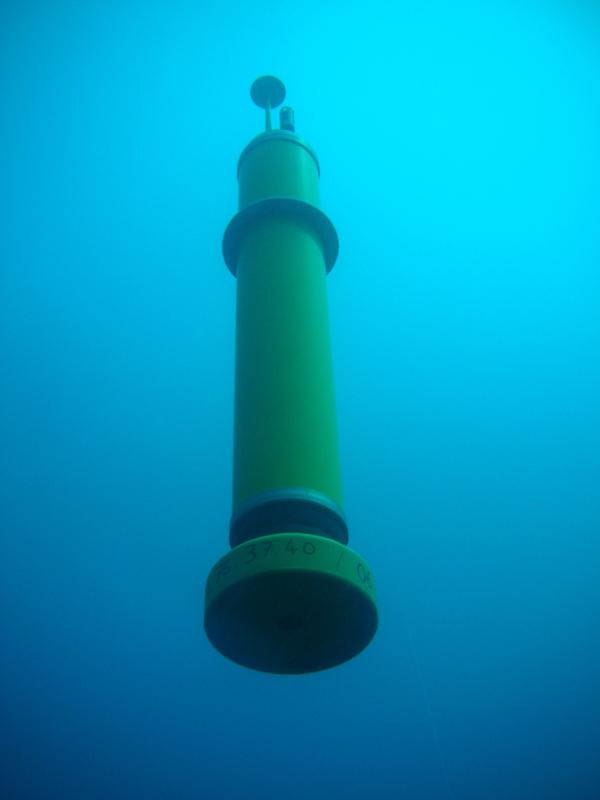Robot 'Mermaids' Swim Seas to Detect Seismic Waves


Robots called "Mermaids" now floating in the oceans are helping to create images of the Earth's interior.
Each robot is known as a Mobile Earthquake Recorder in Marine Areas by Independent Divers, or Mermaid. They are equipped with hydrophones, or underwater microphones, with which they record seismic waves from quakes and other earth-shaking phenomena as they ripple through the water. The mics can pick up the waves of quakes from as far away as 7,450 miles (12,000 km).
The seismic waves sent out by these temblors help scientists draw a picture of the Earth's insides .
"Seismologists use seismic waves very much as X-rays," said researcher Yann Hello, a geophysicist at the University of Nice Sophia Antipolis in Villefranche-sur-Mer, France.
For instance, seismic waves slow down when they hit hotter rock and speed up when they encounter colder rock, and "we analyze this information and translate it into a picture of the hot and cold regions inside the Earth," Hello told OurAmazingPlanet.
The heat-driven motions of rock in the deep Earth underlie the movements of continents and the earthquakes that can devastate cities , so having a more detailed picture of what's happening beneath our feet could better prepare us for such natural disasters.
Ocean gaps
Get the world’s most fascinating discoveries delivered straight to your inbox.
One problem facing the effort to "see" what's happening down below is the vastness of the Earth's oceans. There are very few seismic stations in the oceans, which cover nearly three-quarters of the Earth, leading to gaps in our picture of the world's interior. Having robots out there can thus help fill in our picture of the deep Earth, Hello said.
The Mermaids float freely about 3,300 to 6,500 feet (1 to 2 kilometers) below the ocean's surface. During the initial testing of the robots, currently under way, they surface after recording data for a short time so that researchers can gather their data.
In the future, the robots will surface only after detecting powerful seismic waves, transmitting their data to satellites before returning to their floating depth. Each robot carries a GPS unit to provide its location, as well as sensors for temperature, salinity and ocean current strength.
Two prototype Mermaids have just completed their longest autonomous trips so far. One had a carbon hull, the other, aluminum. The carbon hull is lighter, helping a robot carry more batteries and work for longer in the field, but the aluminum hull proved less sensitive to perturbations in the water and ballasting errors.
Achieving new depths
Launched in June in the Ligurian Sea just south of Nice, France, these prototypes were programmed to dive to a series of cruising depths, surfacing after each new depth was maintained for three or four days. They detected a strong earthquake 5,870 miles (9,450 km) away, a magnitude 7.4 temblor near the Fox Islands off the coast of Alaska. [Related: Seafloor Sensors Listen to Quake Rumblings ]
The first fleet of a half-dozen fully operational aluminum-hulled Mermaids will be launched in the Indian Ocean in the second half of 2012. Their hardware will allow for oceanographic, weather, biological and seismological observations, researchers said.
The technology of these robots will only improve over time, researchers added. Scientists and engineers are now refining the artificial intelligence algorithms that help the Mermaids decide what seismic waves are meaningful or not, and are hoping to develop larger and more lightweight floats with batteries that allow them to survive for up to five years.
The scientists detailed their findings in the Oct. 4 issue of the journal Eos.





